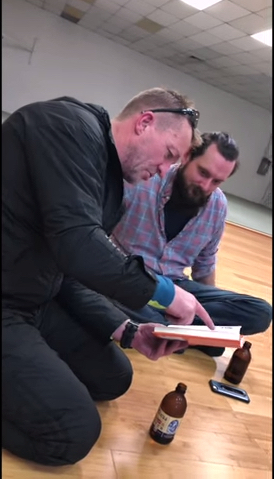You Got It!
Complete Guide to Musashi
The Book of Five Rings Review
As an Amazon Associate I earn from qualifying purchases.
Do you own the original translated works of “The Book of Five Rings”? I’m going to do a complete review of this. It’s a guide to Musashi and other works.
I actually purchased 4 of them, 3 as gifts and the final copy for myself, and I really want you to find out why you should get this yourself. These main reasons are going to be laid out in this review.
Professor Takashi Uozumi dedicated his work to get all the resources available and to get an accurate version of Musashi Miyamoto’s “Book of Five Rings”. Why did he do this? One reason being that in the year 2000, he spent two and half years analyzing 3 of these translations with an exchange student from University of Texas. According to him there were 10 translations of this book (“The Book of Five Rings”), and he analyzed 3 of them. He found out there were some missed parts that did not get translated. This resulted in misinterpretation of the book.
More importantly, the translator, Alex Bennett, of “The Book of Five Rings” said the following:
 |
“So on page 49, the original one with Musashi is gone and you have the student’s original script and all the other ones copied off of this, any partial or full, or whatever and each one of these is different. The one that most people use is this one [points to page]. The Hosokawa book. But that, just like all these other ones, is a copy of Terao Magonojō, they are all different in certain ways. But this one in particular [points to page], there are quite a few mistakes in the left or the right. That really confused the hell out of people. And the other thing that makes it confusing is sometimes you don’t know if Musashi is talking about one sword or two swords. It’s really complicated stuff but…” – Alex Bennett |
So the all translation work up to right now was a copy, of a copy, of a copy of the original text from the “The Book of Five Rings”. Thanks to Uozumi sensei, this translation is close as possible to the original Gorin no Sho, which is the original book of Five Rings in Japanese. So that’s one big reason this book is so valuable.
If we continue on to main reasons, there are some documents, that Uozumi snesei believed and is sure that Musashi himself wrote. These are:
- “Heidōkyō”, which is translated as mirror on the way of combat.
- “Heihō-kakitsuke”, meaning notes on combat strategy.
- “Gōhō-no-Tachimichi”, translates to the five-direction sword pathways.
These documents, for the first time ever, were translated into English in this very book.
If you do kendo or do martial arts and are fascinated about Musashi you should get this.
Final main reason is that he introduced Musashi in an academic way or angle. He explains what Musashi was like and what his name meant, both how and why Japanese people are fascinated by Musashi. In both historical and academic format; he introduces Musashi to you. So you gain a lot of knowledge about him from this book compared to previous publications.
If you are familiar with Musashi’s Gorin no Sho, “The book of Five Rings”, you will see he compares different schools of Musashi and how the name of the techniques used are different. This is in a diagram titled “Transition of techniques in Musashi schools and writings”. This is very interesting.
He also introduces kamae which means stances, jōdan, gedan and chūdan. Even if you’re familiar with the terms, you don’t know how to assume them with nitō. He demonstrates them with images in this book. These are practical, and you can actually learn them from the book.
Alex Bennett, himself, studies kendo and many other martial arts, not only modern but classical martial arts as well, so he can really understand and translate those words for us so we can gain an understanding as well.
In this book, we also get images and information on iconic places related to Musashi. We see modern nitō practitioners, the late Toda sensei and Yamana sensei. So he is introducing all the information about Musashi!
If you haven’t already, and you’re a big fan of Musashi Miyamoto or like samurai culture grab a copy of this fascinating book.
- Home
- Kendo Basics Training Methods for Beginners
- Shizentai: Natural Posture
- The Book of Five Rings
- Home
- Kendo Multimedia
- The Book of Five Rings

